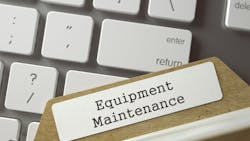Total Temperature Monitoring on a Budget
Excess heat is a not a good sign in electrical equipment and conductors — but detecting it early enough to intervene before failure is always good. Every major electrical asset in your plant should have some form of temperature monitoring.
In an ideal world, you’d have infrared (IR) portals on all of this equipment and you’d have thermographic cameras preset and in position on each of those portals and communicating with a central monitoring system to alert you when there’s the slightest problem. You’d also have a 12,000-sft home with free maintenance/insurance and no mortgage. You have a better chance of scoring the latter than the former. Which is to say, it isn’t going to happen.
But the portals and preset cameras on your most critical equipment should be possible. But if not, then at least manual thermography conducted at the recommended intervals. You can also add temperature sensors that feed a PLC or other system for the purpose of monitoring the temperatures at specific places on your critical equipment; this will give you continuous monitoring along with alarm capability.
Justifying these expenditures for the critical equipment is usually not difficult. But once the critical equipment is taken care of, you still have quite a bit of equipment that isn’t monitored. And there is only so much budget to go around.
To address the remaining equipment, you’ll need to determine its criticality if this information is not already in your CMMS. The standard hierarchy is described in different ways, but it’s pretty much as follows:
- Human life and the environment. Equipment necessary for protecting these gets top priority. You want near-zero downtime with this equipment. Usually, when it is taken offline for maintenance or repair, some or all of plant operations must be suspended.
- Mission critical equipment. The production department usually identifies these, and their rationale includes strategic goals as well as the revenue produced. These need as much uptime as you can provide.
- Center of the curve. On a bell curve of equipment value, this equipment occupies the middle 70% to 80%. Thus, this category typically takes the most maintenance resources.
- Low criticality equipment. The production department usually identifies these. This equipment gets minimal maintenance, but production would prefer failures to be rare.
- Run to failure equipment. This equipment isn’t worth maintaining. That can be because the cost of maintenance is too high, the failure rate is super low, or maintenance just isn’t possible. Or there can be some other reason, such as the equipment is outdated and will be replaced only if it fails.
We saw earlier that you can use a combination of thermography and temperature sensors, but the budget will go only so far. You probably can’t put temperature sensors on all of your criticality 3 equipment. Perhaps you can identify some equipment where risk is higher for this purpose. But what about the rest of that equipment? And what about low criticality equipment? Finally, would it not be nice to be able to see when “run to failure” equipment is red-lining and soon to fail?
There’s a low tech solution called the temperature dot. These are stick-on green decals that turn red (and stay red) at a certain temperature (another color scheme may be available). Obviously, they aren’t produced in one degree increments, and they aren’t adjustable. But you may find enough selections to give you nearly total coverage of your equipment. All that remains is putting someone in charge of walking the rounds to check those dots. For equipment where the right dot temperature isn’t available, you can add a thermocouple and local indicator. This is more expensive to purchase and install than a stick-on dot, but it’s also much more flexible.
This approach allows you to make the most use of your limited temperature monitoring budget and get total coverage. You will have to sacrifice precision on lower-criticality equipment, but you will ensure the equipment that needs precise and/or real-time temperature monitoring gets that need met.
